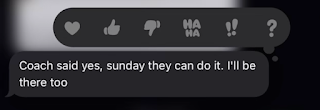Short film research: Brotherhood
a. Sound:
- Melancholic Music: Subtle, emotional scores for sorrow or tension.
- Silences: Used to heighten emotional weight or suspense.
- Diegetic Sounds: Everyday noises (footsteps, breathing, nature) keep it real.
- Dialogue: Sparse but full of meaning, with unspoken emotions.
b. Mise-en-Scène (CLAMPS):
- Costume: Simple, muted clothes show emotional or financial struggles.
- Lighting: Natural or dim, sometimes high contrast, for a somber mood.
- Actors: Emotional performances showing grief and inner turmoil.
- Makeup: Minimal but highlights weariness or pain.
- Props: Symbolic items (photos, letters, heirlooms) tied to emotions or past.
- Setting: Isolated or rundown places that reflect hardship and isolation.
c. Editing:
- Lingering Shots: Slow shots to emphasize deep emotions.
- Montages: Compare past happiness with present struggles.
- Hard Cuts: Abrupt shifts for emotional impact or plot twists.
- Cross-Cutting: Build tension by contrasting hope and despair.
d. Example Films:
- The Silent Child: A deaf girl’s heartbreaking neglect.
- Wasp: A struggling single mother’s raw and emotional story.
e. What’s Good About It:
- Emotional Depth: Explores human struggles and provides catharsis.
- Complex Characters: Flawed and relatable, showing real humanity.
- Powerful Themes: Loss, regret, and redemption create timeless stories.
- Atmosphere: Visuals and tone create haunting, memorable moments.
f. What’s Not Great About It:
- Pacing: Slow pacing can feel too drawn out at times.
- Predictability: Familiar tragic tropes can feel repetitive without fresh twists.


Comments
Post a Comment